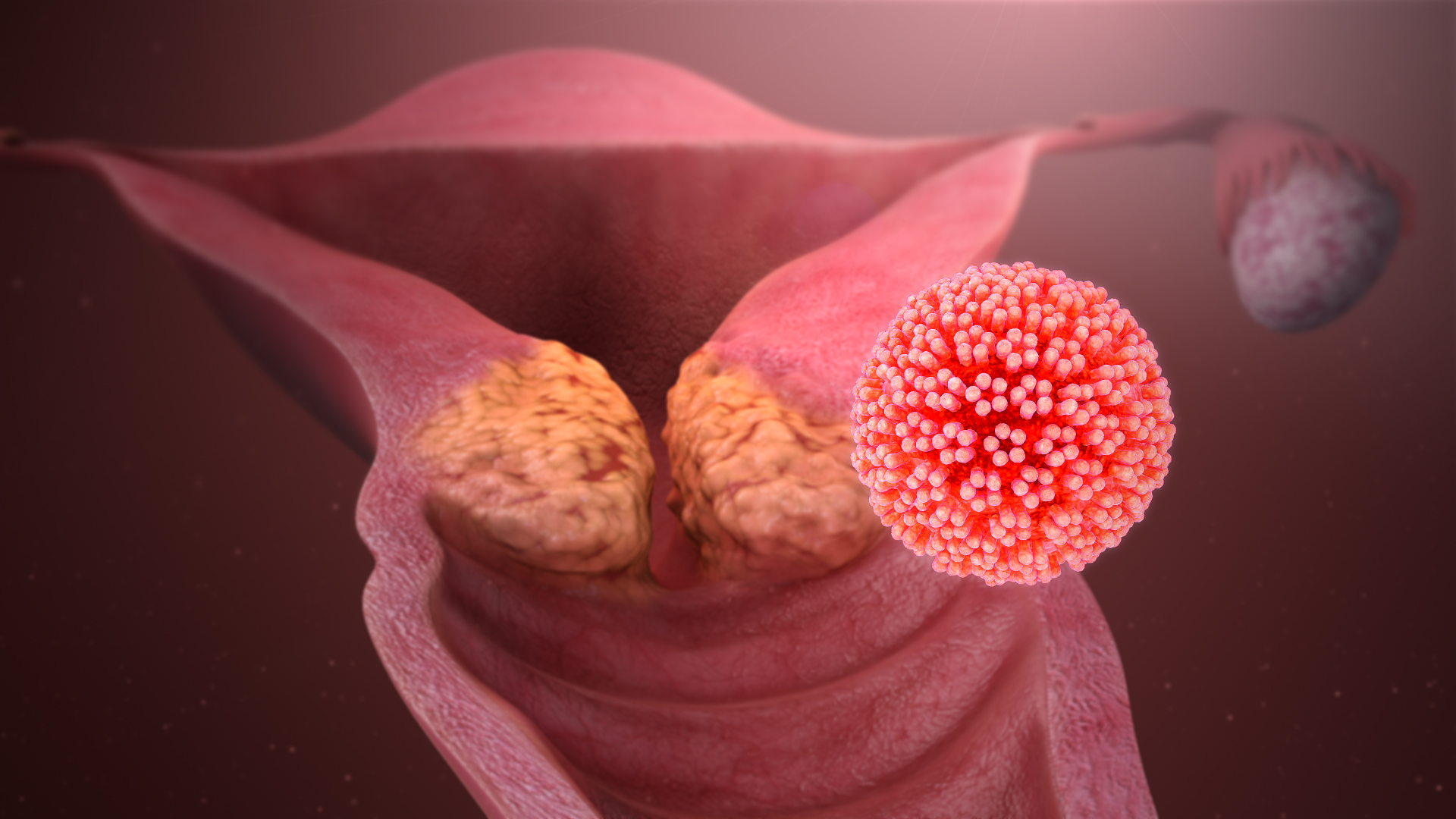Cancer that occurs in the cells of the cervix is known as cervical cancer. The cervix is a lower part of the uterus that is connected to the vagina. It grows slowly, but since it can affect deeper tissues of the cervix, it can spread to other parts of the body such as the liver, bladder, vagina, lungs, and rectum. HPV (Human Papillomavirus) is the most common cause of this cancer. Women between 35 to 44 years of age are most likely to develop this type of cancer.

Types of cervical cancer
Squamous cell carcinoma: This type of cervical cancer occurs in the cells in the lining of the cervix. Most cervical cancers are of this type.
Adenocarcinoma: This type occurs in the cells that produce mucus.
Mixed carcinoma: This type of cancer occurs in both the above-mentioned cells.
Symptoms
There are no signs and symptoms in the early stage of cervical cancer. At a later stage, the most common symptoms are:
- Bleeding after sexual intercourse
- Bleeding between periods
- Bleeding in postmenopausal women
- Vaginal discharge that is tinged with blood
- Vaginal discharge with a strong odor
- Pelvic pain
- Pelvic pain or discomfort during intercourse
Causes
When healthy cells in the cervix develop mutations in their DNA, this cancer begins. HPV (Human Papillomavirus) plays a very important role in causing this kind of cancer. HPV is a sexually transmitted virus and there are more than a hundred types of HPV of which around 13 can cause cervical cancer. So the main causes or factors that can increase the risk of developing this cancer are:
- HPV
- Having many sexual partners
- Sexual active from an early age
- Smoking
- Prolonged use of birth control pills
- Weakened immune system
- Other sexually transmitted diseases such as syphilis, chlamydia, and gonorrhea
Treatment
The various options available for the treatment of this cancer are surgery, radiation therapy, targeted therapy, immunotherapy, and chemotherapy. One or a combination of all these treatments may be required depending upon the stage of cancer as well as age and general health condition of the person suffering from it.
This cancer, like any other cancer, has a good success rate of getting cured if diagnosed and treated early. To reduce the risk of developing this cervix cancer one must receive vaccination against HPV, quit smoking, practice safe sex, and have pap tests done regularly.
Disclaimer: The information in no way constitutes, or should be construed as medical advice. Nor is the above article an endorsement of any research findings discussed in the article an endorsement for any of the source publications.








